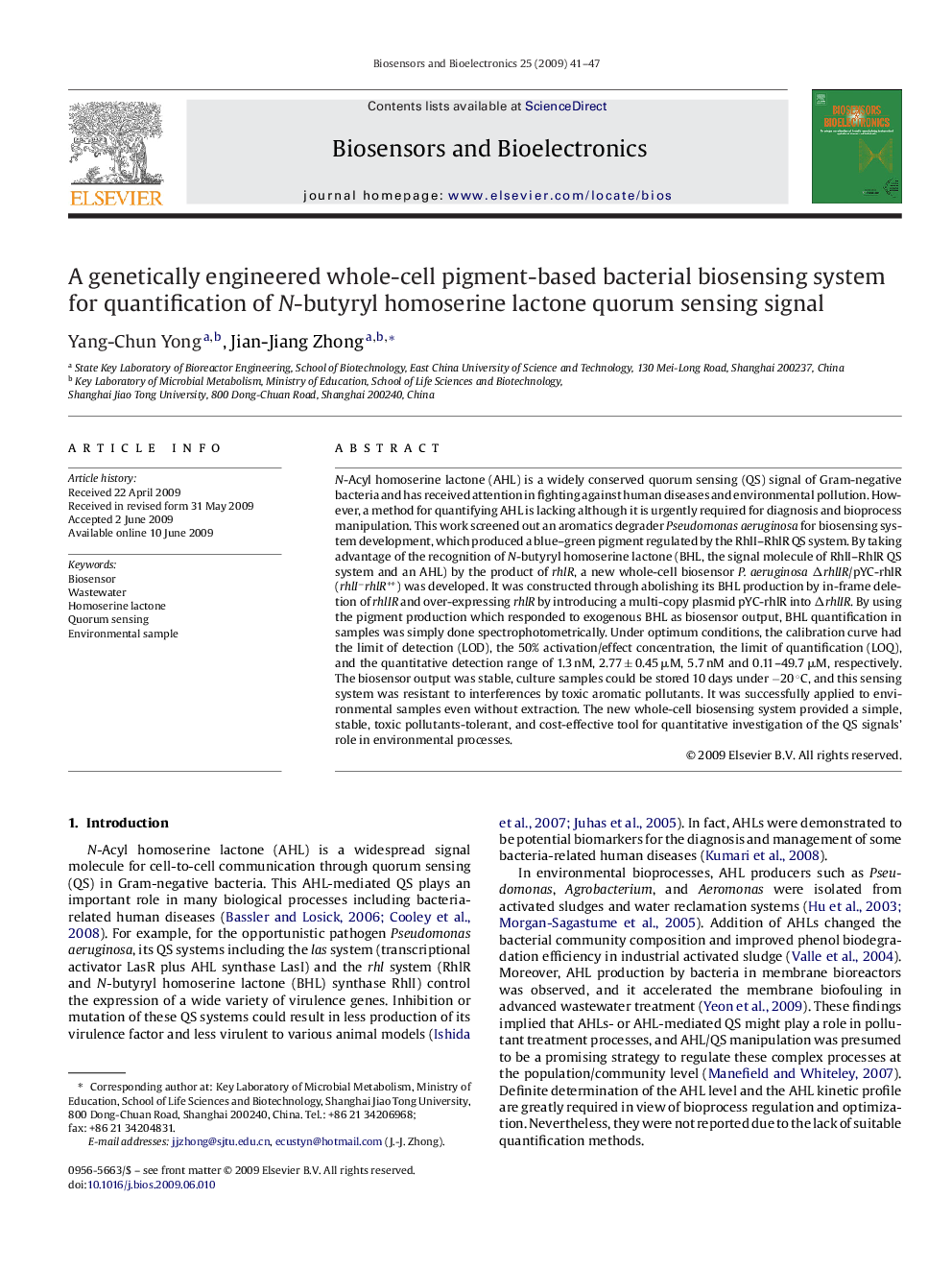| کد مقاله | کد نشریه | سال انتشار | مقاله انگلیسی | نسخه تمام متن |
|---|---|---|---|---|
| 868271 | 909805 | 2009 | 7 صفحه PDF | دانلود رایگان |

N-Acyl homoserine lactone (AHL) is a widely conserved quorum sensing (QS) signal of Gram-negative bacteria and has received attention in fighting against human diseases and environmental pollution. However, a method for quantifying AHL is lacking although it is urgently required for diagnosis and bioprocess manipulation. This work screened out an aromatics degrader Pseudomonas aeruginosa for biosensing system development, which produced a blue–green pigment regulated by the RhlI–RhlR QS system. By taking advantage of the recognition of N-butyryl homoserine lactone (BHL, the signal molecule of RhlI–RhlR QS system and an AHL) by the product of rhlR, a new whole-cell biosensor P. aeruginosa ΔrhlIR/pYC-rhlR (rhlI−rhlR++) was developed. It was constructed through abolishing its BHL production by in-frame deletion of rhlIR and over-expressing rhlR by introducing a multi-copy plasmid pYC-rhlR into ΔrhlIR. By using the pigment production which responded to exogenous BHL as biosensor output, BHL quantification in samples was simply done spectrophotometrically. Under optimum conditions, the calibration curve had the limit of detection (LOD), the 50% activation/effect concentration, the limit of quantification (LOQ), and the quantitative detection range of 1.3 nM, 2.77 ± 0.45 μM, 5.7 nM and 0.11–49.7 μM, respectively. The biosensor output was stable, culture samples could be stored 10 days under −20 °C, and this sensing system was resistant to interferences by toxic aromatic pollutants. It was successfully applied to environmental samples even without extraction. The new whole-cell biosensing system provided a simple, stable, toxic pollutants-tolerant, and cost-effective tool for quantitative investigation of the QS signals’ role in environmental processes.
Journal: Biosensors and Bioelectronics - Volume 25, Issue 1, 15 September 2009, Pages 41–47